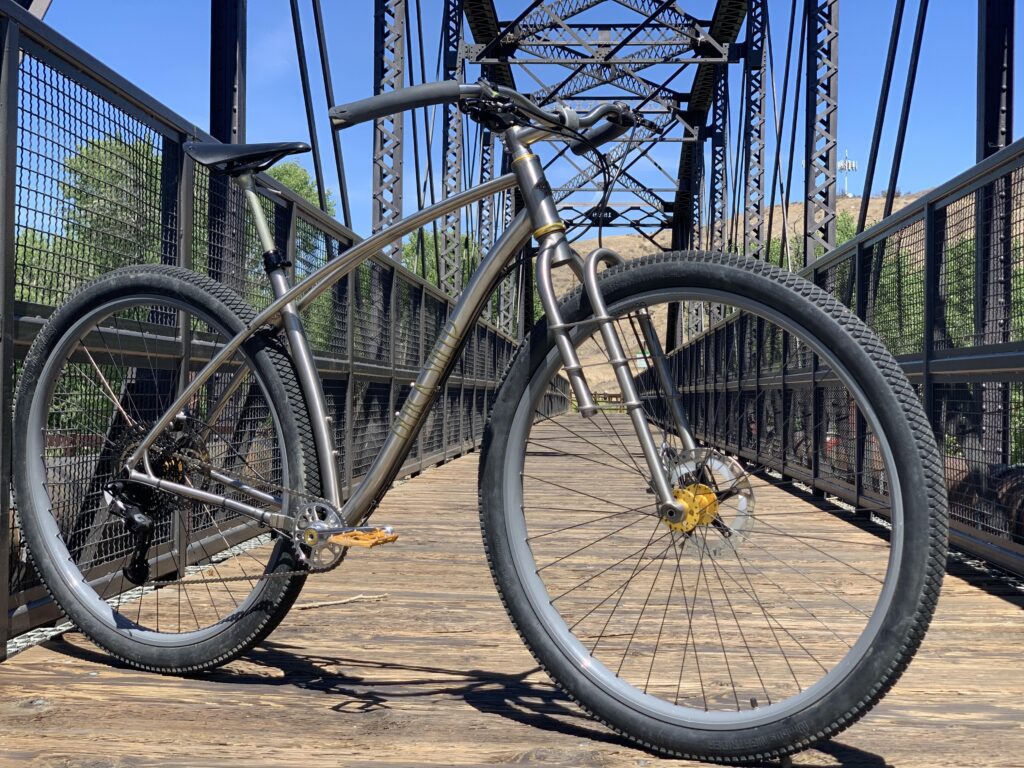In a bold move that could redefine cross-country (XC) racing dynamics, Swiss bicycle manufacturer BMC has taken a revolutionary step by modifying its renowned Fourstroke model to explore the potential of 32-inch wheels in competitive cycling. As the sport evolves and the quest for speed becomes increasingly intense, the question of wheel size has sparked a heated debate among enthusiasts and professionals alike. Are 32-inch wheels the key to unlocking greater efficiency and performance on rugged terrains? BMC’s innovative experiment seeks to answer this crucial question, potentially setting a new standard in XC racing. In this article, we delve into the details of BMC’s ambitious project, assess the implications of this groundbreaking design alteration, and consider whether this larger wheel size could indeed pave the way for the future of cross-country racing.
Exploring the Shift: BMC’s Bold Experiment with 32-Inch Wheels in XC Racing
BMC’s audacious move to integrate 32-inch wheels into its trusted Fourstroke platform marks a pivotal experimentation phase in the realm of cross-country (XC) racing. Traditionally, XC racers have favored smaller wheel sizes for agility and maneuverability, yet BMC’s innovative approach challenges these long-standing conventions. By replacing the well-established 29-inch wheels with oversized counterparts, the company aims to amplify both speed and stability on varied terrains, hypothesizing that such enhancements could redefine performance metrics in competitive biking.
The testing phase has yielded promising results, with early feedback highlighting several key advantages:
- Increased Roll-Over Capability: The larger diameter allows riders to glide over obstacles more seamlessly, reducing the chances of slowing down on rough sections.
- Improved Traction: With a broader contact patch, grip is enhanced, enabling better handling and control, particularly in tricky conditions.
- Greater Stability: Riders report a feeling of confidence as the lower center of gravity contributes to a more grounded ride experience.
As BMC continues its rigorous testing regimen, the cycling community watches with bated breath. Early comparisons with traditional setups reveal a split in preferences among athletes, suggesting a potential paradigm shift in XC design. To illustrate the performance comparisons succinctly, the table below showcases vital statistics gathered during the initial trials.
| Aspect | 29-Inch Wheels | 32-Inch Wheels |
|---|---|---|
| Weight | 11 kg | 12 kg |
| Acceleration | Quick | Moderate |
| Cornering Speed | High | Medium |
| Obstacle Clearance | Good | Excellent |
Performance Insights: How Size Matters in Cross-Country Racing Dynamics
The debate surrounding wheel size in cross-country racing has intensified, especially with the advent of the 32″ wheels. This innovation, tested by BMC in their disassembled Fourstroke, has prompted a closer look at the impact of wheel dimensions on overall race performance. Larger wheels can potentially offer enhanced rolling efficiency over obstacles and improved stability at high speeds, crucial factors in challenging terrains. Moreover, the dynamics of handling, particularly in turns and aggressive descents, might shift significantly, providing riders with an edge in both speed and control.
However, the shift towards larger wheel sizes does not come without trade-offs. Riders may experience increased weight, which could affect acceleration, and the larger circumference could change the geometry of the bike, impacting rider ergonomics. To better understand these dynamics, BMC has compiled key metrics comparing traditional sizes to the emerging 32″ option. The following table illustrates some of these contrasts:
| Wheel Size | Weight (grams) | Rolling Efficiency | Handling Stability |
|---|---|---|---|
| 29″ | 1700 | Good | Moderate |
| 32″ | 1900 | Excellent | High |
Future Recommendations: What XC Racers Need to Know About Wheel Size Advances
The evolution of wheel size in cross-country racing has sparked significant debate among riders and manufacturers alike. As advances in mountain bike technology continue to push the limits of performance, it’s essential for racers to stay well-informed about the potential advantages and drawbacks of experimenting with larger wheel sizes. Key considerations for those contemplating a shift to 32″ wheels include:
- Handling Characteristics: Larger wheels typically offer improved roll-over capability on rough terrain. This could enhance stability and comfort on technical trails.
- Acceleration and Speed: While larger wheels may provide better speed on straightaways, they could also impact acceleration, making it crucial for XC racers to assess how their riding style aligns with these changes.
- Weight and Agility: Increased wheel size could mean added weight, which might affect climbing efficiency and maneuverability. Riders must balance these factors based on their individual strengths and race strategies.
As riders consider the potential shift to larger wheel sizes, understanding the ongoing innovations and empirical data supporting these changes is crucial. Manufacturers are actively testing materials and designs to optimize performance at varying wheel sizes. A comparative analysis of the advantages and consequences of different wheel sizes can provide useful insights. Below is a summary table of key comparisons:
| Wheel Size | Advantages | Disadvantages |
|---|---|---|
| 29″ | Good balance of speed and handling; most common | Can struggle in tight, technical sections |
| 32″ | Superior roll-over capability; improved stability | Potential loss in agility; heavier overall |
| 27.5″ | Great for maneuverability; lighter | May not roll over obstacles as effectively |
In Retrospect
As the debate surrounding wheel sizes in cross-country racing heats up, BMC’s daring experiment with the Fourstroke has certainly ignited interest and speculation in the cycling community. By analyzing the performance implications of 32-inch wheels, the Swiss brand has positioned itself at the forefront of an evolving sport, challenging conventional wisdom and pushing the boundaries of design. While the findings from BMC’s modifications remain under scrutiny, they raise compelling questions about speed, stability, and rider experience. As manufacturers continue to innovate and racers remain hungry for a competitive edge, it is clear that the future of XC racing may very well hinge on the decisions made today. Whether 32-inch wheels will become the standard or remain a niche solution is still to be seen, but one thing is certain: the landscape of cross-country racing is in for an exciting transformation. Stay tuned as we continue to explore the advancements that shape this thrilling sport.











